Global plant growth regulators market is expected to reach USD 8.79 Billion by 2025 at a CAGR of 7.5% during the forecast period from 2018-2025. Use of less agricultural area and growing demand for organically produced goods is fuelling the demand for plant growth regulators
Market Overview:
Plant growth regulators are defined as the chemicals which are capable of enhancing the physiological response of the plants. They help in translocating to the low concentrations part of the plant which helps in increasing the accessibility and supply of the main nutrients to the plants; thus, promoting the development & growth of the plants such as elongation of stems, the formation of flowers & leaves and development of fruits. These plant growth regulators are broadly used to meet the necessity of the food supply. They have sought extensive implementation in the modification of plant physiological processes that include regulating the plant metabolism and constraining or regulating enzyme systems. They are highly demanded due to the regulation of cotton metabolism.
Report Description:
Market Dynamics:
Drivers:
Restraints:
Opportunities:
Challenges:
Global Plant Growth Regulators Market Key Findings:
All the segments have been analyzed on global, regional and country basis. The study includes an analysis of more than 30 countries for each segment.
Segmentation Analysis:
The plant growth regulators market is segmented by crop type, formulation, function, and type.
Regional Segmentation Analysis:
The regions analyzed for the market include North America, Europe, South America, Asia Pacific, and the Middle East and Africa. Europe region dominated the global plant growth regulators market with USD 1.99 Billion in 2017 whereas the North America region held the second dominant position in the market.
Global Plant Growth Regulators Market Competitive Analysis:
Key players in the Plant Growth Regulators market are BASF SE, DuPont, Bayer CropScience Crop Care Australasia Pty. Ltd, NuFarm Ltd., Redox Industries Limited, Sichuan Guoguang Agrochemical Co. Ltd, and Xinyi(H.K.) Industrial Co. Ltd, FMC Corporation, Syngenta AG, Valent Bioscience Corporation, Dow Chemical Company, and WinField Solutions. For instance, in November 2017, Nufarm Limited announced to enter into a binding agreement to acquire a European cereal broadleaf herbicide portfolio from FMC Corporation (“FMC”) for USD 85 Billion. This acquisition intends to increase Nufarm’s presence in Europe.
This study forecasts revenue growth at global, regional, and country levels from 2015 to 2025. Fior Market Research has segmented the global Plant Growth Regulators market on the basis of below mentioned segments:
Global Plant Growth Regulators Market, By Crop Type:
Global Plant Growth Regulators Market, By Type:
Global Plant Growth Regulators Market, By Formulation:
Global Plant Growth Regulators Market, By Function:
Global Plant Growth Regulators Market, By Regions:
1. Introduction
1.1. Objectives of the Study
1.2. Market Definition
1.3. Research Scope
1.4. Currency
2. Research Methodology and Assumptions
3. Executive Summary
4. Premium Insights
4.1. Porter’s Five Forces Analysis
4.2. Value Chain Analysis
4.3. Top Investment Pockets
4.3.1. Market attractiveness analysis by Crop Type
4.3.2. Market attractiveness analysis by Type
4.3.3. Market attractiveness analysis by Formulation
4.3.4. Market attractiveness analysis by Function
4.3.5. Market attractiveness analysis by Region
4.4. Industry Trends
5. Market Dynamics
5.1. Market Evaluation
5.2. Drivers
5.2.1. Reduction in agricultural area along with mounting demand for organic food
5.2.2. Improves product quality and marketability while reducing labor for pinching, pruning, and maintenance, thereby, stimulating the demand.
5.2.3. Soaring demand for organically produced goods is fuelling the demand for plant growth regulators
5.2.4. Ability to reduce lodging in intensive cereal production, control the shoot heights, and stimulate latex flow in rubber plants is propelling the market growth
5.3. Restraints
5.3.1. Time consuming process as the approval period for new products is too long
5.4. Opportunities
5.4.1. Less awareness regarding applications of PGR
5.4.2. Cost associated with regulatory requirements Challenges
6. Global Plant Growth Regulators Market Analysis and Forecast, By Crop Type
6.1. Segment Overview
6.2. Selection
6.2.1. Mass Selection
6.2.2. Pure Line Selection
6.3. Hybridization
6.3.1. Pedigree Method
6.3.2. Bulk Method
6.3.3. Single Cross
6.3.4. Double Cross
6.3.5. Three-Way Cross
7. Mutation Breeding
7.1. Cereals & Grains
7.1.1. Wheat
7.1.2. Rice
7.1.3. Corn
7.1.4. Others
7.2. Oilseeds & Pulses
7.2.1. Cotton Seed
7.2.2. Soybean
7.2.3. Sunflower
7.2.4. Others
7.3. Fruits & Vegetables
7.3.1. Fruits
7.3.2. Vegetables
7.4. Turf & Ornamentals
8. Global Plant Growth Regulators Market Analysis and Forecast, By Type
8.1. Segment Overview
8.2. Cytokinins
8.3. Auxins
8.4. Gibberellins
8.5. Ethylene
8.6. Other Types
9. Global Plant Growth Regulators Market Analysis and Forecast, By Formulation
9.1. Segment Overview
9.2. Water-Dispersible & Water-Soluble Granules
9.3. Wettable Powders
9.4. Solutions
10. Global Plant Growth Regulators Market Analysis and Forecast, By Functions
10.1. Segment Overview
10.2. Plant Growth Promoters
10.3. Plant Growth Inhibitors
11. Global Plant Growth Regulators Market Analysis and Forecast, By Regional Analysis
11.1. Segment Overview
11.2. North America
11.2.1. U.S.
11.2.2. Canada
11.2.3. Mexico
11.3. Europe
11.3.1. Germany
11.3.2. France
11.3.3. Sweden
11.3.4. Netherlands
11.3.5. U.K.
11.3.6. Italy
11.3.7. Spain
11.3.8. Turkey
11.3.9. Switzerland
11.3.10. Belgium
11.3.11. Rest of Europe
11.4. Asia-Pacific
11.4.1. Japan
11.4.2. China
11.4.3. India
11.4.4. South Korea
11.4.5. Australia
11.4.6. Singapore
11.4.7. Malaysia
11.4.8. Thailand
11.4.9. Indonesia
11.4.10. Philippines
11.4.11. Rest of Asia-Pacific
11.5. South America
11.5.1. Brazil
11.5.2. Argentina
11.5.3. Colombia
11.5.4. Rest of South America
11.6. Middle East and Africa
11.6.1. Saudi Arabia
11.6.2. UAE
11.6.3. Egypt
11.6.4. Nigeria
11.6.5. South Africa
11.6.6. Rest of Middle East and Africa
12. Global Plant Growth Regulators Market-Competitive Landscape
12.1. Overview
12.2. Market Share of Key Players in the Plant Growth Regulators Market
12.2.1. Global Company Market Share
12.2.2. North America Company Market Share
12.2.3. Europe Company Market Share
12.2.4. APAC Company Market Share
12.3. Competitive Situations and Trends
12.3.1. Type Launches and Developments
12.3.2. Partnerships, Collaborations, and Agreements
12.3.3. Mergers & Acquisitions
12.3.4. Expansions
13. Company Profiles
13.1. BASF SE
13.1.1. Business Overview
13.1.2. Company Snapshot
13.1.3. Company Market Share Analysis
13.1.4. Company Type Portfolio
13.1.5. Recent Developments
13.1.6. SWOT Analysis
13.2. DuPont
13.2.1. Business Overview
13.2.2. Company Snapshot
13.2.3. Company Market Share Analysis
13.2.4. Company Type Portfolio
13.2.5. Recent Developments
13.2.6. SWOT Analysis
13.3. Bayer CropScience Crop Care Australasia Pty. Ltd
13.3.1. Business Overview
13.3.2. Company Snapshot
13.3.3. Company Market Share Analysis
13.3.4. Company Type Portfolio
13.3.5. Recent Developments
13.3.6. SWOT Analysis
13.4. NuFarm Ltd
13.4.1. Business Overview
13.4.2. Company Snapshot
13.4.3. Company Market Share Analysis
13.4.4. Company Type Portfolio
13.4.5. Recent Developments
13.4.6. SWOT Analysis
13.5. Redox Industries Limited
13.5.1. Business Overview
13.5.2. Company Snapshot
13.5.3. Company Market Share Analysis
13.5.4. Company Type Portfolio
13.5.5. Recent Developments
13.5.6. SWOT Analysis
13.6. Sichuan Guoguang Agrochemical Co. Ltd
13.6.1. Business Overview
13.6.2. Company Snapshot
13.6.3. Company Market Share Analysis
13.6.4. Company Type Portfolio
13.6.5. Recent Developments
13.6.6. SWOT Analysis
13.7. Xinyi(H.K.) Industrial Co. Ltd
13.7.1. Business Overview
13.7.2. Company Snapshot
13.7.3. Company Market Share Analysis
13.7.4. Company Type Portfolio
13.7.5. Recent Developments
13.7.6. SWOT Analysis
13.8. FMC Corporation
13.8.1. Business Overview
13.8.2. Company Snapshot
13.8.3. Company Market Share Analysis
13.8.4. Company Type Portfolio
13.8.5. Recent Developments
13.8.6. SWOT Analysis
13.9. Syngenta AG
13.9.1. Business Overview
13.9.2. Company Snapshot
13.9.3. Company Market Share Analysis
13.9.4. Company Type Portfolio
13.9.5. Recent Developments
13.9.6. SWOT Analysis
13.10. Valent Bioscience Corporation
13.10.1. Business Overview
13.10.2. Company Snapshot
13.10.3. Company Market Share Analysis
13.10.4. Company Type Portfolio
13.10.5. Recent Developments
13.10.6. SWOT Analysis
13.11. WinField Solutions
13.11.1. Business Overview
13.11.2. Company Snapshot
13.11.3. Company Market Share Analysis
13.11.4. Company Type Portfolio
13.11.5. Recent Developments
13.11.6. SWOT Analysis
List of Table
1. Global Plant Growth Regulators Market, By Crop Type, 2015–2025 (USD Billion) (Kilo Tons)
2. Global Plant Growth Regulators Market, By Cereals & Grains , 2015–2025 (USD Billion) (Kilo Tons)
3. Global Plant Growth Regulators Market, By Oilseeds & Pulses, 2015–2025 (USD Billion) (Kilo Tons)
4. Global Plant Growth Regulators Market, By Fruits & Vegetables, 2015–2025 (USD Billion) (Kilo Tons)
5. Global Oilseeds & Pulses Plant Growth Regulators Market, By Region, 2015–2025 (USD Billion) (Kilo Tons)
6. Global Turf & Ornamentals Plant Growth Regulators Market, By Region, 2015–2025 (USD Billion) (Kilo Tons)
7. Global Cereals & Grains Plant Growth Regulators Market, By Region, 2015–2025 (USD Billion) (Kilo Tons)
8. Global Fruits & Vegetables Plant Growth Regulators Market, By Region, 2015–2025 (USD Billion) (Kilo Tons)
9. Global Plant Growth Regulators Market, By Type, 2015–2025 (USD Billion) (Kilo Tons)
10. Global Cytokinins Breeding Plant Growth Regulators Market, BY Region, 2015–2025 (USD Billion) (Kilo Tons)
11. Global Auxins Plant Growth Regulators Market, By Region, 2015–2025 (USD Billion) (Kilo Tons)
12. Global Gibberellins Breeding Plant Growth Regulators Market, BY Region, 2015–2025 (USD Billion) (Kilo Tons)
13. Global Ethylene Plant Growth Regulators Market, By Region, 2015–2025 (USD Billion) (Kilo Tons)
14. Global Other Types Breeding Plant Growth Regulators Market, BY Region, 2015–2025 (USD Billion) (Kilo Tons)
15. Global Plant Growth Regulators Market, By Formulation, 2015–2025 (USD Billion) (Kilo Tons)
16. Global Water-Dispersible & Water-Soluble Granules Plant Growth Regulators Market, By Region, 2015–2025 (USD Billion) (Kilo Tons)
17. Global Wettable Powders Plant Growth Regulators Market, By Region, 2015–2025 (USD Billion) (Kilo Tons)
18. Global Solutions Plant Growth Regulators Market, By Region, 2015–2025 (USD Billion) (Kilo Tons)
19. Global Plant Growth Regulators Market, By Functions, 2015–2025 (USD Billion) (Kilo Tons)
20. Global Plant Growth Promoters Plant Growth Regulators Market, By Region, 2015–2025 (USD Billion) (Kilo Tons)
21. Global Plant Growth Inhibitors Plant Growth Regulators Market, By Region, 2015–2025 (USD Billion) (Kilo Tons)
22. Global Plant Growth Regulators Market, By Region, 2015–2025 (USD Billion) (Kilo Tons)
23. North America Plant Growth Regulators Market, By Crop Type, 2015–2025 (USD Billion) (Kilo Tons)
24. North America Plant Growth Regulators Market, By Type, 2015–2025 (USD Billion) (Kilo Tons)
25. North America Plant Growth Regulators Market, By Formulation, 2015–2025 (USD Billion) (Kilo Tons)
26. North America Plant Growth Regulators Market, By Function, 2015–2025 (USD Billion) (Kilo Tons)
27. U.S. Plant Growth Regulators Market, By Crop Type, 2015–2025 (USD Billion) (Kilo Tons)
28. U.S. Plant Growth Regulators Market, By Type, 2015–2025 (USD Billion) (Kilo Tons)
29. U.S. Plant Growth Regulators Market, By Formulation, 2015–2025 (USD Billion) (Kilo Tons)
30. U.S. Plant Growth Regulators Market, By Function, 2015–2025 (USD Billion) (Kilo Tons)
31. Canada Plant Growth Regulators Market, By Crop Type, 2015–2025 (USD Billion) (Kilo Tons)
32. Canada Plant Growth Regulators Market, By Type, 2015–2025 (USD Billion) (Kilo Tons)
33. Canada Plant Growth Regulators Market, By Formulation, 2015–2025 (USD Billion) (Kilo Tons)
34. Canada Plant Growth Regulators Market, By Function, 2015–2025 (USD Billion) (Kilo Tons)
35. Mexico Plant Growth Regulators Market, By Crop Type, 2015–2025 (USD Billion) (Kilo Tons)
36. Mexico Plant Growth Regulators Market, By Type, 2015–2025 (USD Billion) (Kilo Tons)
37. Mexico Plant Growth Regulators Market, By Formulation, 2015–2025 (USD Billion) (Kilo Tons)
38. Mexico Plant Growth Regulators Market, By Function, 2015–2025 (USD Billion) (Kilo Tons)
39. Europe Plant Growth Regulators Market, By Crop Type, 2015–2025 (USD Billion) (Kilo Tons)
40. Europe Plant Growth Regulators Market, By Type, 2015–2025 (USD Billion) (Kilo Tons)
41. Europe Plant Growth Regulators Market, By Formulation, 2015–2025 (USD Billion) (Kilo Tons)
42. Europe Plant Growth Regulators Market, By Function, 2015–2025 (USD Billion) (Kilo Tons)
43. Germany Plant Growth Regulators Market, By Crop Type, 2015–2025 (USD Billion) (Kilo Tons)
44. Germany Plant Growth Regulators Market, By Type, 2015–2025 (USD Billion) (Kilo Tons)
45. Germany Plant Growth Regulators Market, By Formulation, 2015–2025 (USD Billion) (Kilo Tons)
46. Germany Plant Growth Regulators Market, By Function, 2015–2025 (USD Billion) (Kilo Tons)
47. France Plant Growth Regulators Market, By Crop Type, 2015–2025 (USD Billion) (Kilo Tons)
48. France Plant Growth Regulators Market, By Type, 2015–2025 (USD Billion) (Kilo Tons)
49. France Plant Growth Regulators Market, By Formulation, 2015–2025 (USD Billion) (Kilo Tons)
50. France Plant Growth Regulators Market, By Function, 2015–2025 (USD Billion) (Kilo Tons)
51. Sweden Plant Growth Regulators Market, By Crop Type, 2015–2025 (USD Billion) (Kilo Tons)
52. Sweden Plant Growth Regulators Market, By Type, 2015–2025 (USD Billion) (Kilo Tons)
53. Sweden Plant Growth Regulators Market, By Formulation, 2015–2025 (USD Billion) (Kilo Tons)
54. Sweden Plant Growth Regulators Market, By Function, 2015–2025 (USD Billion) (Kilo Tons)
55. Netherlands Plant Growth Regulators Market, By Crop Type, 2015–2025 (USD Billion) (Kilo Tons)
56. Netherlands Plant Growth Regulators Market, By Type, 2015–2025 (USD Billion) (Kilo Tons)
57. Netherlands Plant Growth Regulators Market, By Formulation, 2015–2025 (USD Billion) (Kilo Tons)
58. Netherlands Plant Growth Regulators Market, By Function, 2015–2025 (USD Billion) (Kilo Tons)
59. U.K. Plant Growth Regulators Market, By Crop Type, 2015–2025 (USD Billion) (Kilo Tons)
60. U.K. Plant Growth Regulators Market, By Type, 2015–2025 (USD Billion) (Kilo Tons)
61. U.K. Plant Growth Regulators Market, By Formulation, 2015–2025 (USD Billion) (Kilo Tons)
62. U.K. Plant Growth Regulators Market, By Function, 2015–2025 (USD Billion) (Kilo Tons)
63. Italy Plant Growth Regulators Market, By Crop Type, 2015–2025 (USD Billion) (Kilo Tons)
64. Italy Plant Growth Regulators Market, By Type, 2015–2025 (USD Billion) (Kilo Tons)
65. Italy Plant Growth Regulators Market, By Formulation, 2015–2025 (USD Billion) (Kilo Tons)
66. Italy Plant Growth Regulators Market, By Function, 2015–2025 (USD Billion) (Kilo Tons)
67. Spain Plant Growth Regulators Market, By Crop Type, 2015–2025 (USD Billion) (Kilo Tons)
68. Spain Plant Growth Regulators Market, By Type, 2015–2025 (USD Billion) (Kilo Tons)
69. Spain Plant Growth Regulators Market, By Formulation, 2015–2025 (USD Billion) (Kilo Tons)
70. Spain Plant Growth Regulators Market, By Function, 2015–2025 (USD Billion) (Kilo Tons)
71. Turkey Plant Growth Regulators Market, By Crop Type, 2015–2025 (USD Billion) (Kilo Tons)
72. Turkey Plant Growth Regulators Market, By Type, 2015–2025 (USD Billion) (Kilo Tons)
73. Turkey Plant Growth Regulators Market, By Formulation, 2015–2025 (USD Billion) (Kilo Tons)
74. Turkey Plant Growth Regulators Market, By Function, 2015–2025 (USD Billion) (Kilo Tons)
75. Switzerland Plant Growth Regulators Market, By Crop Type, 2015–2025 (USD Billion) (Kilo Tons)
76. Switzerland Plant Growth Regulators Market, By Type, 2015–2025 (USD Billion) (Kilo Tons)
77. Switzerland Plant Growth Regulators Market, By Formulation, 2015–2025 (USD Billion) (Kilo Tons)
78. Switzerland Plant Growth Regulators Market, By Function, 2015–2025 (USD Billion) (Kilo Tons)
79. Belgium Plant Growth Regulators Market, By Crop Type, 2015–2025 (USD Billion) (Kilo Tons)
80. Belgium Plant Growth Regulators Market, By Type, 2015–2025 (USD Billion) (Kilo Tons)
81. Belgium Plant Growth Regulators Market, By Formulation, 2015–2025 (USD Billion) (Kilo Tons)
82. Belgium Plant Growth Regulators Market, By Function, 2015–2025 (USD Billion) (Kilo Tons)
83. Asia Pacific Plant Growth Regulators Market, By Crop Type, 2015–2025 (USD Billion) (Kilo Tons)
84. Asia Pacific Plant Growth Regulators Market, By Type, 2015–2025 (USD Billion) (Kilo Tons)
85. Asia Pacific Plant Growth Regulators Market, By Formulation, 2015–2025 (USD Billion) (Kilo Tons)
86. Asia Pacific Plant Growth Regulators Market, By Function, 2015–2025 (USD Billion) (Kilo Tons)
87. Japan Plant Growth Regulators Market, By Crop Type, 2015–2025 (USD Billion) (Kilo Tons)
88. Japan Plant Growth Regulators Market, By Type, 2015–2025 (USD Billion) (Kilo Tons)
89. Japan Plant Growth Regulators Market, By Formulation, 2015–2025 (USD Billion) (Kilo Tons)
90. Japan Plant Growth Regulators Market, By Function, 2015–2025 (USD Billion) (Kilo Tons)
91. China Plant Growth Regulators Market, By Crop Type, 2015–2025 (USD Billion) (Kilo Tons)
92. China Plant Growth Regulators Market, By Type, 2015–2025 (USD Billion) (Kilo Tons)
93. China Plant Growth Regulators Market, By Formulation, 2015–2025 (USD Billion) (Kilo Tons)
94. China Plant Growth Regulators Market, By Function, 2015–2025 (USD Billion) (Kilo Tons)
95. India Plant Growth Regulators Market, By Crop Type, 2015–2025 (USD Billion) (Kilo Tons)
96. India Plant Growth Regulators Market, By Type, 2015–2025 (USD Billion) (Kilo Tons)
97. India Plant Growth Regulators Market, By Formulation, 2015–2025 (USD Billion) (Kilo Tons)
98. India Plant Growth Regulators Market, By Function, 2015–2025 (USD Billion) (Kilo Tons)
99. South Korea Plant Growth Regulators Market, By Crop Type, 2015–2025 (USD Billion) (Kilo Tons)
100. South Korea Plant Growth Regulators Market, By Type, 2015–2025 (USD Billion) (Kilo Tons)
101. South Korea Plant Growth Regulators Market, By Formulation, 2015–2025 (USD Billion) (Kilo Tons)
102. South Korea Plant Growth Regulators Market, By Function, 2015–2025 (USD Billion) (Kilo Tons)
103. Australia Plant Growth Regulators Market, By Crop Type, 2015–2025 (USD Billion) (Kilo Tons)
104. Australia Plant Growth Regulators Market, By Type, 2015–2025 (USD Billion) (Kilo Tons)
105. Australia Plant Growth Regulators Market, By Formulation, 2015–2025 (USD Billion) (Kilo Tons)
106. Australia Plant Growth Regulators Market, By Function, 2015–2025 (USD Billion) (Kilo Tons)
107. Singapore Plant Growth Regulators Market, By Crop Type, 2015–2025 (USD Billion) (Kilo Tons)
108. Singapore Plant Growth Regulators Market, By Type, 2015–2025 (USD Billion) (Kilo Tons)
109. Singapore Plant Growth Regulators Market, By Formulation, 2015–2025 (USD Billion) (Kilo Tons)
110. Singapore Plant Growth Regulators Market, By Function, 2015–2025 (USD Billion) (Kilo Tons)
111. Malaysia Plant Growth Regulators Market, By Crop Type, 2015–2025 (USD Billion) (Kilo Tons)
112. Malaysia Plant Growth Regulators Market, By Type, 2015–2025 (USD Billion) (Kilo Tons)
113. Malaysia Plant Growth Regulators Market, By Formulation, 2015–2025 (USD Billion) (Kilo Tons)
114. Malaysia Plant Growth Regulators Market, By Function, 2015–2025 (USD Billion) (Kilo Tons)
115. Thailand Plant Growth Regulators Market, By Crop Type, 2015–2025 (USD Billion) (Kilo Tons)
116. Thailand Plant Growth Regulators Market, By Type, 2015–2025 (USD Billion) (Kilo Tons)
117. Thailand Plant Growth Regulators Market, By Formulation, 2015–2025 (USD Billion) (Kilo Tons)
118. Thailand Plant Growth Regulators Market, By Function, 2015–2025 (USD Billion) (Kilo Tons)
119. Indonesia Plant Growth Regulators Market, By Crop Type, 2015–2025 (USD Billion) (Kilo Tons)
120. Indonesia Plant Growth Regulators Market, By Type, 2015–2025 (USD Billion) (Kilo Tons)
121. Indonesia Plant Growth Regulators Market, By Formulation, 2015–2025 (USD Billion) (Kilo Tons)
122. Indonesia Plant Growth Regulators Market, By Function, 2015–2025 (USD Billion) (Kilo Tons)
123. Philippines Plant Growth Regulators Market, By Crop Type, 2015–2025 (USD Billion) (Kilo Tons)
124. Philippines Plant Growth Regulators Market, By Type, 2015–2025 (USD Billion) (Kilo Tons)
125. Philippines Plant Growth Regulators Market, By Formulation, 2015–2025 (USD Billion) (Kilo Tons)
126. Philippines Plant Growth Regulators Market, By Function, 2015–2025 (USD Billion) (Kilo Tons)
127. South America Plant Growth Regulators Market, By Crop Type, 2015–2025 (USD Billion) (Kilo Tons)
128. South America Plant Growth Regulators Market, By Type, 2015–2025 (USD Billion) (Kilo Tons)
129. South America Plant Growth Regulators Market, By Formulation, 2015–2025 (USD Billion) (Kilo Tons)
130. South America Plant Growth Regulators Market, By Function, 2015–2025 (USD Billion) (Kilo Tons)
131. Brazil Plant Growth Regulators Market, By Crop Type, 2015–2025 (USD Billion) (Kilo Tons)
132. Brazil Plant Growth Regulators Market, By Type, 2015–2025 (USD Billion) (Kilo Tons)
133. Brazil Plant Growth Regulators Market, By Formulation, 2015–2025 (USD Billion) (Kilo Tons)
134. Brazil Plant Growth Regulators Market, By Function, 2015–2025 (USD Billion) (Kilo Tons)
135. Argentina Plant Growth Regulators Market, By Crop Type, 2015–2025 (USD Billion) (Kilo Tons)
136. Argentina Plant Growth Regulators Market, By Type, 2015–2025 (USD Billion) (Kilo Tons)
137. Argentina Plant Growth Regulators Market, By Formulation, 2015–2025 (USD Billion) (Kilo Tons)
138. Argentina Plant Growth Regulators Market, By Function, 2015–2025 (USD Billion) (Kilo Tons)
139. Colombia Plant Growth Regulators Market, By Crop Type, 2015–2025 (USD Billion) (Kilo Tons)
140. Colombia Plant Growth Regulators Market, By Type, 2015–2025 (USD Billion) (Kilo Tons)
141. Colombia Plant Growth Regulators Market, By Formulation, 2015–2025 (USD Billion) (Kilo Tons)
142. Colombia Plant Growth Regulators Market, By Function, 2015–2025 (USD Billion) (Kilo Tons)
143. Middle East and Africa Plant Growth Regulators Market, By Crop Type, 2015–2025 (USD Billion) (Kilo Tons)
144. Middle East and Africa Plant Growth Regulators Market, By Type, 2015–2025 (USD Billion) (Kilo Tons)
145. Middle East and Africa Plant Growth Regulators Market, By Formulation, 2015–2025 (USD Billion) (Kilo Tons)
146. Middle East and Africa Plant Growth Regulators Market, By Function, 2015–2025 (USD Billion) (Kilo Tons)
147. Saudi Arabia Plant Growth Regulators Market, By Crop Type, 2015–2025 (USD Billion) (Kilo Tons)
148. Saudi Arabia Plant Growth Regulators Market, By Type, 2015–2025 (USD Billion) (Kilo Tons)
149. Saudi Arabia Plant Growth Regulators Market, By Formulation, 2015–2025 (USD Billion) (Kilo Tons)
150. Saudi Arabia Plant Growth Regulators Market, By Function, 2015–2025 (USD Billion) (Kilo Tons)
151. UAE Plant Growth Regulators Market, By Crop Type, 2015–2025 (USD Billion) (Kilo Tons)
152. UAE Plant Growth Regulators Market, By Type, 2015–2025 (USD Billion) (Kilo Tons)
153. UAE Plant Growth Regulators Market, By Formulation, 2015–2025 (USD Billion) (Kilo Tons)
154. UAE Plant Growth Regulators Market, By Function, 2015–2025 (USD Billion) (Kilo Tons)
155. Egypt Plant Growth Regulators Market, By Crop Type, 2015–2025 (USD Billion) (Kilo Tons)
156. Egypt Plant Growth Regulators Market, By Type, 2015–2025 (USD Billion) (Kilo Tons)
157. Egypt Plant Growth Regulators Market, By Formulation, 2015–2025 (USD Billion) (Kilo Tons)
158. Egypt Plant Growth Regulators Market, By Function, 2015–2025 (USD Billion) (Kilo Tons)
159. Nigeria Plant Growth Regulators Market, By Crop Type, 2015–2025 (USD Billion) (Kilo Tons)
160. Nigeria Plant Growth Regulators Market, By Type, 2015–2025 (USD Billion) (Kilo Tons)
161. Nigeria Plant Growth Regulators Market, By Formulation, 2015–2025 (USD Billion) (Kilo Tons)
162. Nigeria Plant Growth Regulators Market, By Function, 2015–2025 (USD Billion) (Kilo Tons)
163. South Africa Plant Growth Regulators Market, By Crop Type, 2015–2025 (USD Billion) (Kilo Tons)
164. South Africa Plant Growth Regulators Market, By Type, 2015–2025 (USD Billion) (Kilo Tons)
165. South Africa Plant Growth Regulators Market, By Formulation, 2015–2025 (USD Billion) (Kilo Tons)
166. South Africa Plant Growth Regulators Market, By Function, 2015–2025 (USD Billion) (Kilo Tons)
List of Figures
1. Global Plant Growth Regulators Market Segmentation
2. Plant Growth Regulators Market: Research Methodology
3. Market Size Estimation Methodology: Bottom-Up Approach
4. Market Size Estimation Methodology: Top-Down Approach
5. Data Triangulation
6. Porter’s Five Forces Analysis
7. Value Chain Analysis
8. Global Plant Growth Regulators Market attractiveness analysis by Crop Type
9. Global Plant Growth Regulators Market attractiveness analysis by Type
10. Global Plant Growth Regulators Market attractiveness analysis by Formulation
11. Global Plant Growth Regulators Market attractiveness analysis by Function
12. Global Plant Growth Regulators Market attractiveness analysis by Region
13. Global Plant Growth Regulators Market: Dynamics
14. Global Plant Growth Regulators Market Share by Crop Type (2017 & 2025)
15. Global Plant Growth Regulators Market Share by Type (2017 & 2025)
16. Global Plant Growth Regulators Market Share by Formulation (2017 & 2025)
17. Global Plant Growth Regulators Market Share by Function (2017 & 2025)
18. Global Plant Growth Regulators Market Share by Regions (2017 & 2025)
19. Global Plant Growth Regulators Market Share by Company (2018)
Market research is a method of gathering, assessing and deducing data & information about a particular market. Market research is very crucial in these days. The techniques analyze about how a product/service can be offered to the market to its end-customers, observe the impact of that product/service based on the past customer experiences, and cater their needs and demands. Owing to the successful business ventures, accurate, relevant and thorough information is the base for all the organizations because market research report/study offers specific market related data & information about the industry growth prospects, perspective of the existing customers, and the overall market scenario prevailed in past, ongoing present and developing future. It allows the stakeholders and investors to determine the probability of a business before committing substantial resources to the venture. Market research helps in solving the marketing issues challenges that a business will most likely face.
Market research is valuable because of the following reasons:
Our research report features both the aspects; qualitative and quantitative. Qualitative part provides insights about the market driving forces, potential opportunities, customer’s demands and requirement which in turn help the companies to come up with new strategies in order to survive in the long run competition. The quantitative segment offers the most credible information related to the industry. Based on the data gathering, we use to derive the market size and estimate their future growth prospects on the basis of global, region and country.
Our market research process involves with the four specific stages.
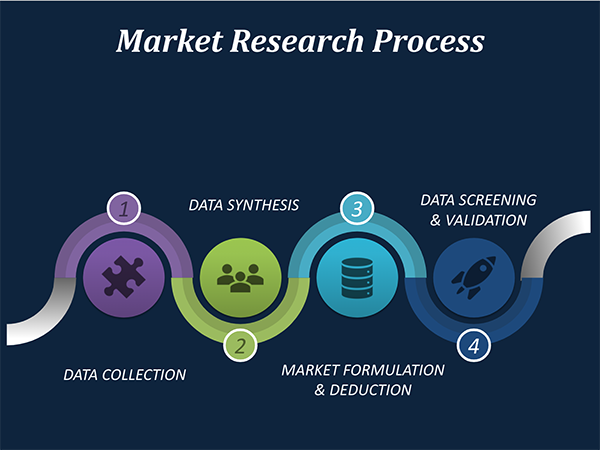
Data Collection: This stage of the market research process involves with the gathering and collecting of the market/industry related data from the sources. There are basically two types of research methods:
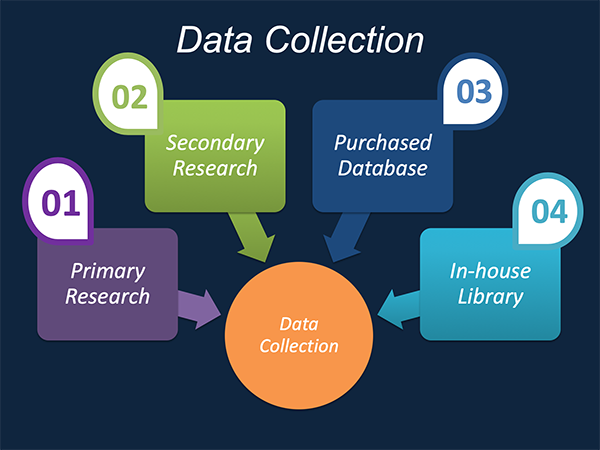
Data Synthesis: This stage includes the evaluation and assessment of all the data acquired from the primary and secondary research. It likewise includes in evaluating the information for any disparity watched while information gathering identified with the market. The data & information is gathered with consideration to the heterogeneity of sources. Scientific and statistical methods are implemented for synthesizing dissimilar information sets and provide the relevant data which is fundamental for formulating strategies. Our organization has broad involvement with information amalgamation where the information goes through different stages:
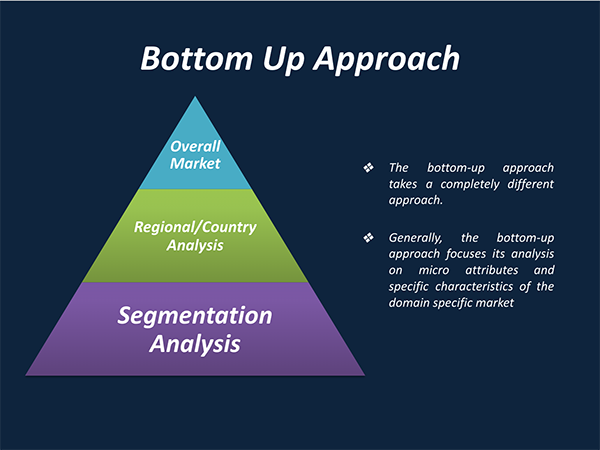
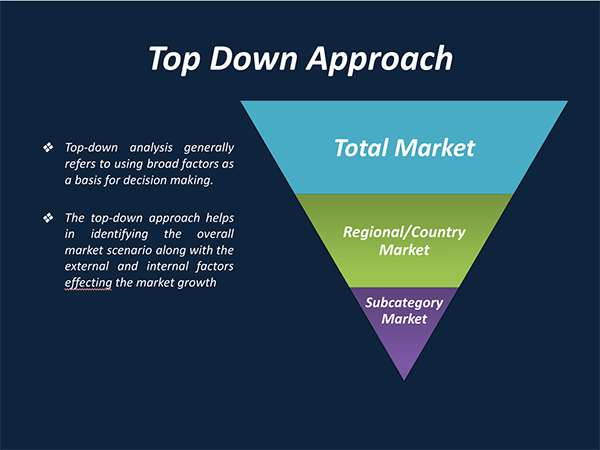
Market Formulation & Deduction: The last stage includes assigning the data & information in a suitable way in order to derive market size. Analyst reviews and domain based opinions based on holistic approach of market estimation combined with industry investigation additionally features a crucial role in this stage.
This stage includes with the finalization of the market size and numbers that we have gathered from primary and secondary research. With the data & information addition, we ensure that there is no gap in the market information. Market trend analysis is finished by our analysts by utilizing data extrapolation procedures, which give the most ideal figures to the market.
Data Validation: Validation is the most crucial step in the process. Validation & re-validation through scientifically designed technique and process that helps us finalize data-points to be used for final calculations. This stage also involves with the data triangulation process. Data triangulation generally implicates the cross validation and matching the data which has been collected from primary and secondary research methods.
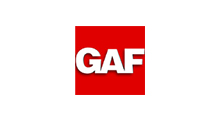

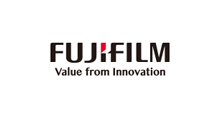
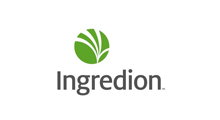

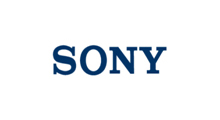
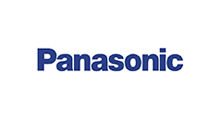
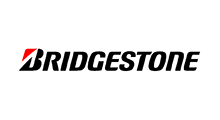
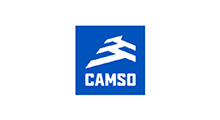
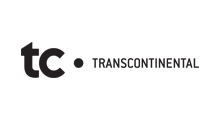
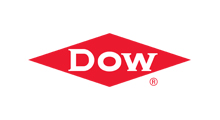
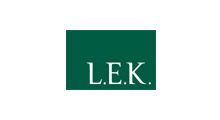
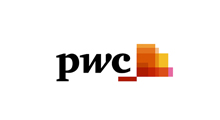

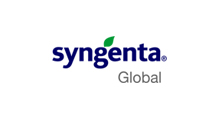

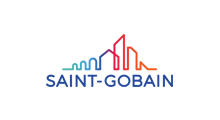
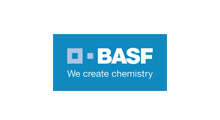
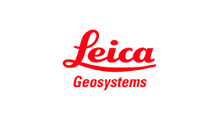
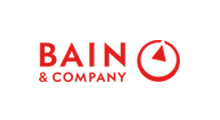
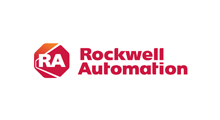
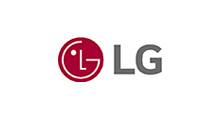
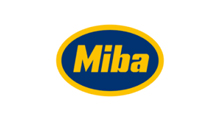
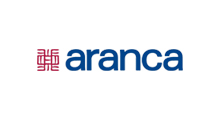
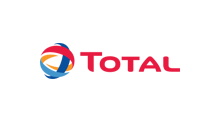
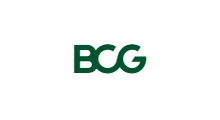
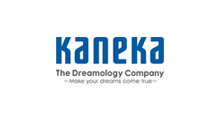
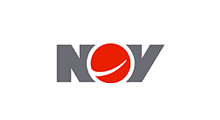
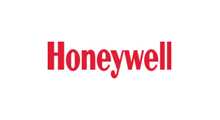
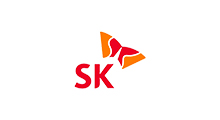
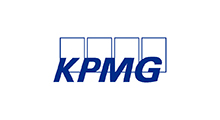
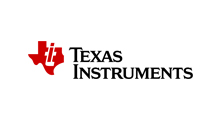
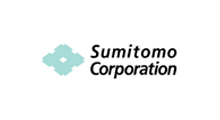

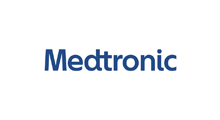
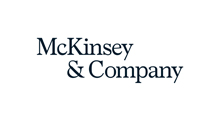
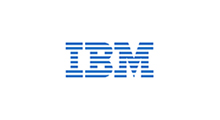
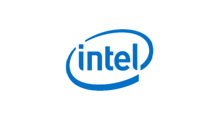
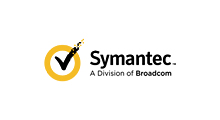
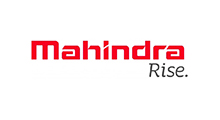
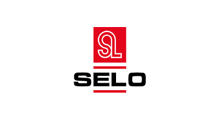
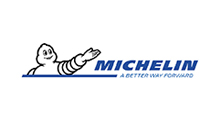
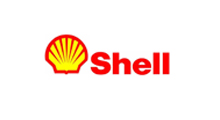
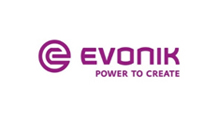

Free Customization
Countries can be added on demand
Free yearly update on purchase of Multi/Corporate User License
Companies served till date

We serve our customers 24x7 for 365 days through calls, emails and live chat options.
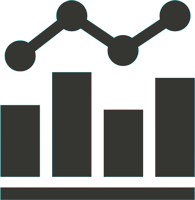
Huge database of exceptional market reports bringing market intelligence to your fingertips.

SSL enabled, we offer you various secured payment options for risk free purchase.